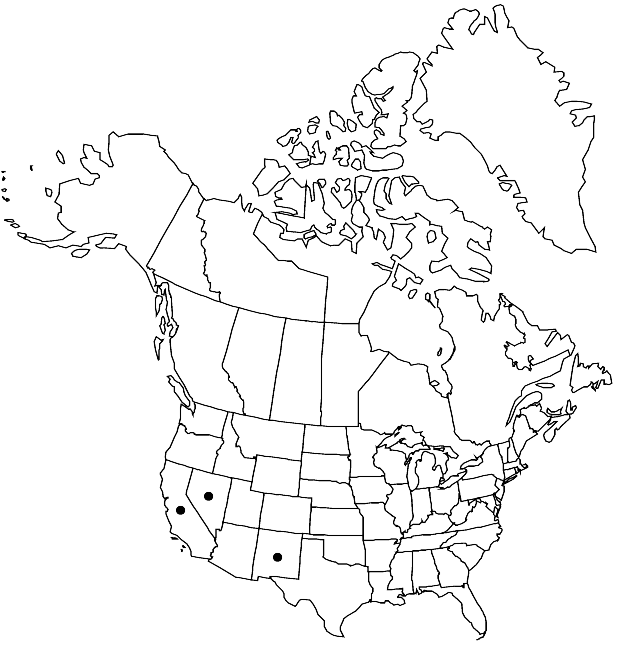Difference between revisions of "Cleomella obtusifolia"
in J. C. Frémont, Rep. Exped. Rocky Mts., 311. 1845.
FNA>Volume Importer |
FNA>Volume Importer |
(No difference)
| |
Revision as of 20:21, 24 September 2019
Plants 10–40(–120) cm. Stems profusely branched at base (usually spreading or mat-like, sometimes erect); moderately to densely hairy (sometimes spreading-hispidulous). Leaves: stipules finely divided into crinkled threads, 5–7 mm; petiole 0.7–0.8(–2) cm; leaflet blade elliptic to obovate, 0.5–1.5 × 0.2–0.8 cm, thin, margins entire, apex obtuse to rounded, mucronulate, surfaces spreading-hispidulous. Inflorescences racemes, terminating stems and branches (solitary flowers in leaf axils of distal stems), 0.5–1.2 cm (0.5–1 cm in fruit); bracts unifoliate, 2–7 mm. Pedicels ascending in fruit, 4–10 mm (3–12 mm in fruit). Flowers: sepals green, ovate-deltate, 1–1.5(–2.3) × 0.9–1.2 mm, sparsely hairy; petals yellow or orange, oblong, 3.5–6 × 1.2–2 mm, sparsely hairy abaxially; stamens yellow, 8–14 mm; anthers 1.5–2.2 mm; gynophore reflexed, 4–5 mm in fruit; ovary ± rhomboidal, 1–1.5 mm; style 2–3(–5) mm. Capsules rhomboidal, 3.5–4 × 7–10 mm (striate), strigose. Seeds (1–)2–6, light brown to gray with black mottling, globose, 1.5 mm, smooth.
Phenology: Flowering late winter–fall.
Habitat: Sandy, often alkaline flats and desert playas
Elevation: 300-1300(-2000) m
Distribution

Calif., Nev., N.Mex.
Discussion
Cleomella obtusifolia is variable in degree of pubescence, elaboration of stipules, and fruit shape. Four varieties have been recognized; additional taxonomic investigation is desirable.
Selected References
None.